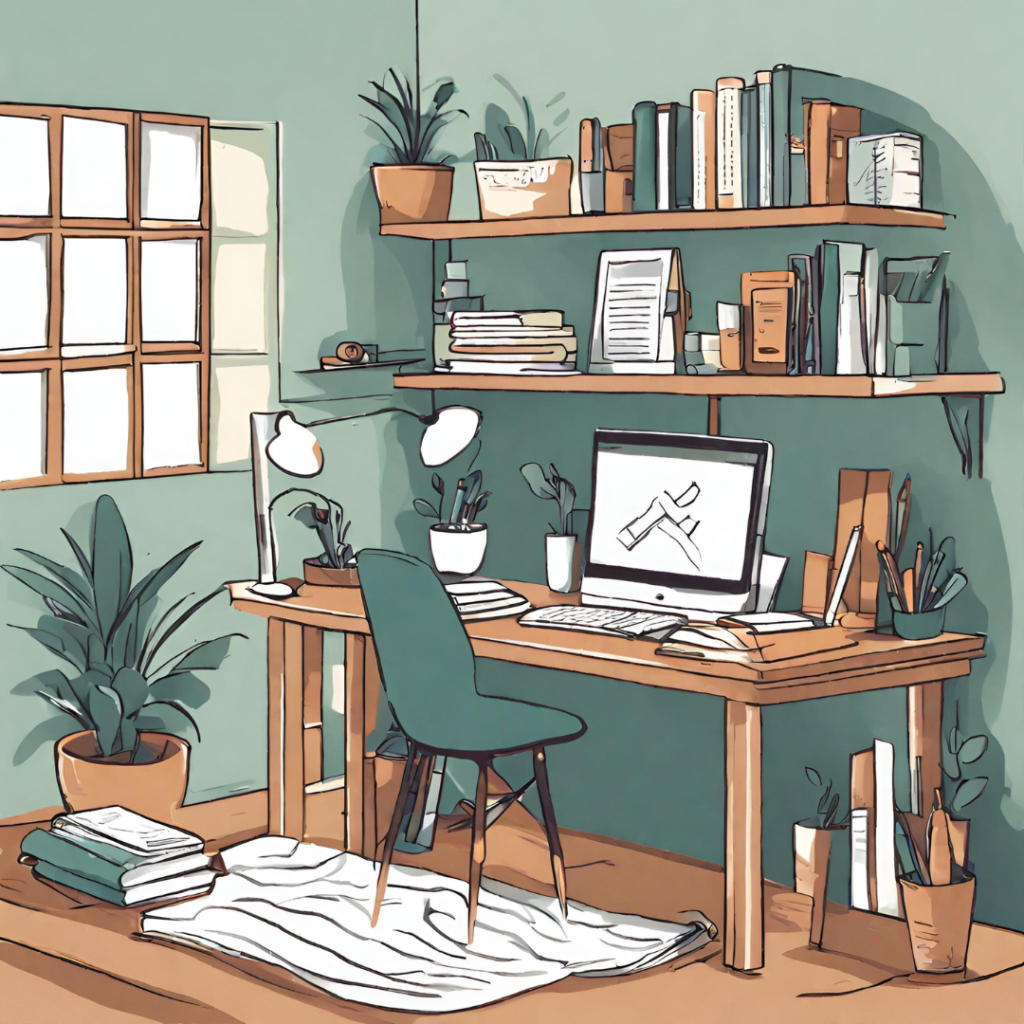
The environment in which we choose to study plays a pivotal role in our ability to focus, retain information, and stay motivated. Especially with the rise of remote learning and work-from-home trends, having a dedicated space that is both calming and conducive to concentration is indispensable. In this detailed guide, we delve into the art of crafting such a space, ensuring optimal productivity and mental well-being.
Understanding the Importance of a Dedicated Study Space
A dedicated study space serves as more than just a physical area to work in; it acts as a psychological cue, signaling the brain to transition into ‘work mode’. This mental switch offers numerous benefits:
- Enhance Focus: An environment free from unnecessary distractions ensures that your attention remains undivided, leading to more productive study sessions.
- Boost Productivity: With essential resources within arm’s reach, you reduce the time spent searching for materials, making your study sessions more efficient.
- Encourage Consistency: Establishing a routine becomes simpler when specific actions, like studying, are tied to particular locations.
Steps to Crafting Your Ideal Study Sanctuary
1. Choose the Right Location
The first step in creating a sanctuary is selecting an appropriate spot. While the ideal location might vary based on personal preferences and available space, some general tips include:
- Quiet Corners: Identify areas of your home that remain relatively untouched by the daily hustle and bustle, ensuring fewer interruptions
- Natural Light: Position your study space near windows if possible. Natural light has been shown to improve mood, focus, and overall well-being.
- Ventilation: A well-ventilated area not only keeps you refreshed but also aids in maintaining alertness during those long study hours.
2. Comfortable Seating
Your choice of seating can make a significant difference in study outcomes. An uncomfortable chair can lead to physical strain, reducing the duration and quality of study sessions.
- Ergonomic Chairs: These chairs are designed with the human body’s structure in mind, supporting natural posture and reducing the risk of back and neck pain.
- Adjustable Desks: These desks cater to your preference at any given time, allowing you the flexibility to either stand or sit, promoting better circulation.
3. Organize Your Space
Organization is key. A tidy space not only reduces distractions but also promotes a sense of calm.
- Shelving Systems: Wall-mounted shelves or standalone units can house textbooks, journals, and other study materials, ensuring they’re easily accessible yet off your desk.
- Drawer Dividers: These handy tools compartmentalize your stationery, ensuring that every pen, marker, or highlighter has its place.
- Cable Management: In our digital age, tangled cables can become a nuisance. Using clips, sleeves, or even simple zip ties can keep your tech cables organized, preventing them from becoming a distracting mess.

4. Lighting Matters
Proper lighting is crucial. Poor lighting can cause eye strain, headaches, and fatigue.
- Task Lighting: Desk lamps with adjustable necks allow you to direct light precisely where you need it, be it a textbook or a notepad.
- Ambient Lighting: As evening sets in, having soft, warm lighting can set a calming atmosphere, perfect for winding down with some light reading or revision.
- Blue Light Filters: Spending hours on digital devices can be strenuous for the eyes. Screen protectors or software solutions that reduce blue light can be beneficial.
5. Personalize Your Space
A personal touch can transform a mundane space into a sanctuary.
Inspiring Decor: Incorporate elements like wall art, quotes, or posters that resonate with your aspirations, serving as daily reminders of your goals.
- Plants: Beyond their aesthetic appeal, plants like snake plants or peace lilies purify indoor air, providing a refreshing environment.
- Color Psychology: Colors have the power to influence our emotions. Calming blues might help reduce anxiety, while shades of yellow can inspire creativity.
6. Limit Distractions
In our interconnected world, distractions are ever-present. Here’s how to mitigate them:
- Digital Detox: Designate specific times when you’ll keep smartphones or other gadgets away. This fosters uninterrupted study periods.
- Noise Control: If ambient noise is a concern, consider noise-cancelling headphones. Alternatively, apps that play ambient sounds can drown out disruptive noises.
- Organized Desktop: On the digital front, an uncluttered computer desktop with systematically organized files can drastically reduce time wasted searching for documents.
7. Incorporate Break Areas
Continuous study can be counterproductive. It’s vital to take short, frequent breaks.
- Rest Zones: Designate a cozy spot, like a comfy chair or bean bag, where you can relax, read, or even nap for a few minutes.
- Refreshment Station: Dedicate a small corner for light snacks, water, or tea, ensuring you stay hydrated and energized without needing to leave your study sanctuary.
Additional Tips for an Enhanced Study Experience
- Invest in Quality Tools: High-quality stationery, tech gadgets, or even paper can enhance your study experience. It’s often worth spending a little more on tools that you’ll use daily.
- Engage Multiple Senses: Introduce elements like soft background music, scented candles, or textured desk mats. Such stimuli can improve focus and retention by engaging more than just the visual sense.
- Stay Adaptable: Your study needs will change over time. The study sanctuary you create should be adaptable, allowing modifications as per your evolving requirements.
Conclusion
Creating a study sanctuary is an ongoing process, one that requires both introspection and experimentation. By understanding the significance of such a space and implementing the mentioned strategies, you can design a haven that supports your academic goals and enhances your overall well-being. Remember, a dedicated study space is more than just a spot to read or write; it’s a testament to your dedication and commitment to lifelong learning.

